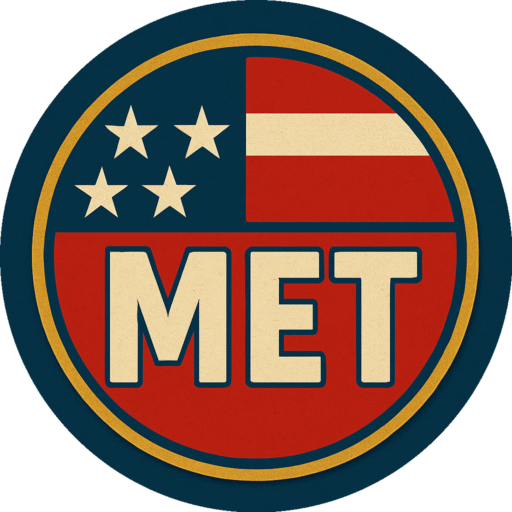
“Gavin Newsom” by Gage Skidmore is licensed under CC BY-SA 2.0 .
Trump Targets Newsom: Why Threats to Arrest a Governor Reach Beyond California
Calls for Newsom’s arrest have moved from fringe to federal. What happens next could reshape the limits of executive power.
by Met Middleson
June 10, 2025
Gavin Newsom is no stranger to political attacks. But in recent days, the rhetoric from the Trump administration has shifted into something more serious and more dangerous. Federal officials have floated the idea of arresting California’s governor. Trump has amplified it. House Speaker Mike Johnson went further, suggesting Newsom deserved to be “tarred and feathered.” And with National Guard troops deployed to Los Angeles without the state’s consent, what began as a political clash is now raising legal alarms about power, precedent, and the future of executive authority.
A GOVERNOR UNDER ATTACK
The attacks on Gavin Newsom have moved beyond politics. Donald Trump has repeatedly referred to him as “Newscum,” blamed him for unrest in Los Angeles, and mocked him in speeches and posts to millions of followers. In a Truth Social post, Trump suggested that Newsom’s policies had directly caused “catastrophic riots,” and he praised ICE’s Tom Homan for suggesting Newsom could be arrested. Trump’s response: “I would do it if I were Tom… it would be a great thing.”
The escalation didn’t stop there. Speaker of the House Mike Johnson publicly stated that Newsom should be “tarred and feathered” for defying federal immigration orders. Taken together, these statements are no longer just rhetorical jabs. They signal a shift in posture from disagreement to dehumanization, and from criticism to criminalization.
FROM FEUD TO FORCE
The political feud escalated into federal action when Trump ordered the National Guard into Los Angeles without a formal request from the state. Newsom called the move illegal and immediately filed a lawsuit, accusing the administration of abusing emergency authority to seize control of California’s military forces. The federalized Guard was deployed to “restore order” following protests, but Newsom argues the decision bypassed state leadership and violated both legal norms and constitutional protections.
At the same time, Trump intensified his rhetoric online, describing the protests as “insurrection” and mocking mask-wearing demonstrators. He warned that “troublemakers will be hit harder than they’ve ever been hit before,” while celebrating the Guard’s presence as a success. Newsom, in contrast, described it as “political theater designed to provoke” and warned that using federal troops as a tool of personal retribution sets a dangerous precedent.
THE POLITICS OF ARREST
Calls for Newsom’s arrest began as fringe chatter, but they’ve steadily climbed the ranks of official discourse. Tom Homan, Trump’s border czar and head of Enforcement and Removal Operations at ICE, publicly speculated that Newsom and Los Angeles Mayor Karen Bass could face prosecution for interfering with federal immigration enforcement. Trump amplified the statement, calling it “a great idea” and suggesting Homan should “follow through.”
Even without legal grounding, the threat alone changes the tone of debate. It signals that challenging federal power might come with personal risk.
That message became even clearer when federal agents arrested Wisconsin Judge Hannah Dugan earlier this year. Prosecutors allege she helped an undocumented defendant avoid ICE detainment by coordinating his release through a courthouse back entrance. While Dugan and her defenders argue she was following judicial discretion, the case marks a sharp escalation that moves the idea of criminalizing defiance from theory to precedent. For officials like Newsom, it raises a new question: if a judge can be arrested for a courtroom decision, what’s stopping a governor from facing the same?
POWER WITHOUT PERMISSION
At the center of the legal standoff is the federalization of California’s National Guard. Trump sent troops into Los Angeles without a request from Governor Newsom, a move that Newsom’s legal team calls unconstitutional. The lawsuit argues that the president invoked emergency powers not to restore order but to override political opposition.
While the White House insists the move was necessary to respond to “growing unrest,” Newsom contends the deployment was never about public safety. He points out that neither the state nor city leaders asked for assistance, and that the timing of the action came just hours after his administration announced it would not cooperate with ICE-led raids. To Newsom, the message is clear: disobedience brings consequences.
THE GOVERNOR’S GAMBLE
Newsom’s response has been defiant. Rather than deescalate, he has leaned into the confrontation, filing a lawsuit, speaking out in national interviews, and directly challenging Trump’s authority. “Arrest me? Let’s go,” he wrote in one post. In another, he called Trump’s actions “the stuff of authoritarian regimes” and warned that federal overreach like this threatens not just California but every state.
By casting the conflict as a test of democratic boundaries, Newsom is betting that public support will follow a clear stand against federal intimidation. But the risks are real. If the legal challenge fails or the administration escalates further, he may find himself isolated, not just politically but operationally.
He is not the only one to test this line. When Harvard refused to comply with new federal directives on campus speech and foreign disclosure, the Trump administration responded by suspending its federal research funding and launching multiple investigations into its operations. The message was unmistakable. Resistance can be met with total isolation. For Newsom, the risk is not just legal defeat. It is watching the machinery of federal power turn inward on his state, the way it already has on others.
THE STAKES BEYOND CALIFORNIA
The clash between Trump and Newsom may feel personal, but the implications are institutional. What happens next could set the tone for how far a president can go in using federal power against state officials. If the threats of arrest become a normalized part of executive messaging, or if military deployment without consent becomes a tested, unchallenged tool, the impact will reach far beyond California.
Governors in other states are watching closely, including those who may agree with Trump’s policies. Because today it is Newsom. Tomorrow it could be any official who defies federal command, whether on immigration, education, or public safety. The real question is not whether this fight ends with a lawsuit. It is whether the presidency itself now comes with a license to punish dissent.



